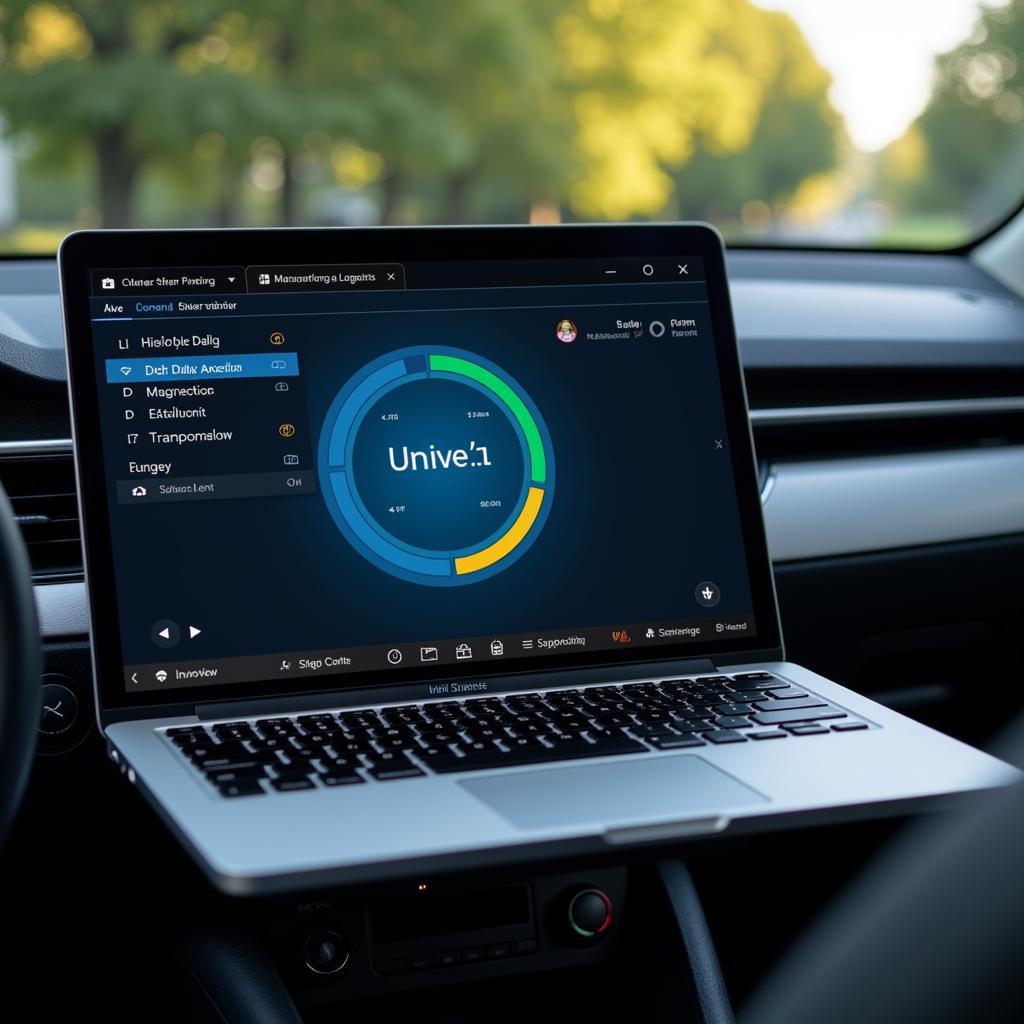The Active Driving Display with Traffic Sign Recognition 17 is a sophisticated safety feature found in many modern vehicles. It uses a forward-facing camera mounted behind the windshield to detect and display road signs on the dashboard, helping drivers stay informed and drive safely. However, like any technology, it can sometimes encounter issues. This comprehensive guide will delve into the intricacies of this system, addressing common problems and providing expert insights on troubleshooting and resolution.
Understanding Your Active Driving Display with Traffic Sign Recognition 17
The system is designed to identify a variety of road signs, including:
- Speed limits
- Stop signs
- Yield signs
- No passing zones
- Construction warnings
The detected sign then appears on your dashboard display, typically within the instrument cluster or head-up display (HUD), if equipped. This real-time information assists drivers in maintaining awareness of current road conditions and legal speed limits, even if physical signs are obstructed or missed.
Common Issues and Troubleshooting Tips
While the Active Driving Display with Traffic Sign Recognition 17 is generally reliable, occasional problems can arise. Here are some common issues and how to address them:
1. System Malfunctions or Inaccuracies
Problem: The system might display incorrect signs, fail to recognize signs altogether, or show error messages.
Possible Causes:
- Obstructed camera view due to dirt, debris, or snow
- Poor weather conditions like heavy rain, fog, or snow
- Glare from the sun or other light sources
- Damaged or misaligned camera
- Software glitches
Troubleshooting:
- Clean the windshield: Ensure the area around the camera is clean and free of any obstructions.
- Check for system updates: Manufacturers often release software updates to improve system accuracy and address known bugs. Visit your dealership or check the manufacturer’s website for updates.
- Inspect the camera: Visually inspect the camera for any signs of damage or misalignment. If you suspect an issue, consult a qualified technician.
- Restart the system: Sometimes, a simple restart can resolve minor software glitches. Turn off the ignition, wait a few minutes, and then restart the vehicle.
2. Traffic Sign Recognition Not Functioning
Problem: The system fails to detect any traffic signs.
Possible Causes:
- Feature deactivated in settings
- Temporary system error
- Faulty camera or related components
Troubleshooting:
- Check the settings: Navigate through your vehicle’s infotainment system to ensure the traffic sign recognition feature is enabled.
- Consult your owner’s manual: Refer to your owner’s manual for specific instructions on troubleshooting the system for your make and model.
- Seek professional assistance: If the issue persists, schedule an appointment with a certified technician for diagnosis and repair.
3. Inaccurate Speed Limit Display
Problem: The system displays an incorrect speed limit.
Possible Causes:
- Outdated map data
- GPS signal interference
- System misinterpreting a sign
Troubleshooting:
- Update navigation maps: Ensure your vehicle’s navigation system has the latest map updates installed, as outdated maps can lead to speed limit discrepancies.
- Check GPS signal: Make sure your vehicle has a clear line of sight to the sky for optimal GPS signal reception.
- Report inaccuracies: Many navigation systems allow you to report inaccurate speed limit information, contributing to improved map data for all users.
 Car Diagnostic Software on Laptop
Car Diagnostic Software on Laptop
The Importance of Professional Diagnostics
While this guide offers general troubleshooting tips, it is crucial to seek professional assistance for persistent or complex issues.
“Attempting to diagnose or repair advanced driver-assistance systems yourself can be risky,” advises John Miller, a senior automotive electrical engineer specializing in remote diagnostics. “These systems are intricate and require specialized knowledge, tools, and software. It’s always best to trust a qualified technician for accurate diagnosis and safe repairs.”
Remote diagnostics, a service offered by some manufacturers and specialized workshops, can often identify the root cause of system malfunctions without requiring a physical inspection.
Conclusion
The Active Driving Display with Traffic Sign Recognition 17 is a valuable safety feature that can significantly enhance driver awareness and road safety. By understanding its functionality and common issues, you can take proactive measures to ensure it operates optimally. Remember, if troubleshooting tips don’t resolve the problem, don’t hesitate to seek professional assistance to address any concerns and keep your vehicle running safely and efficiently.


